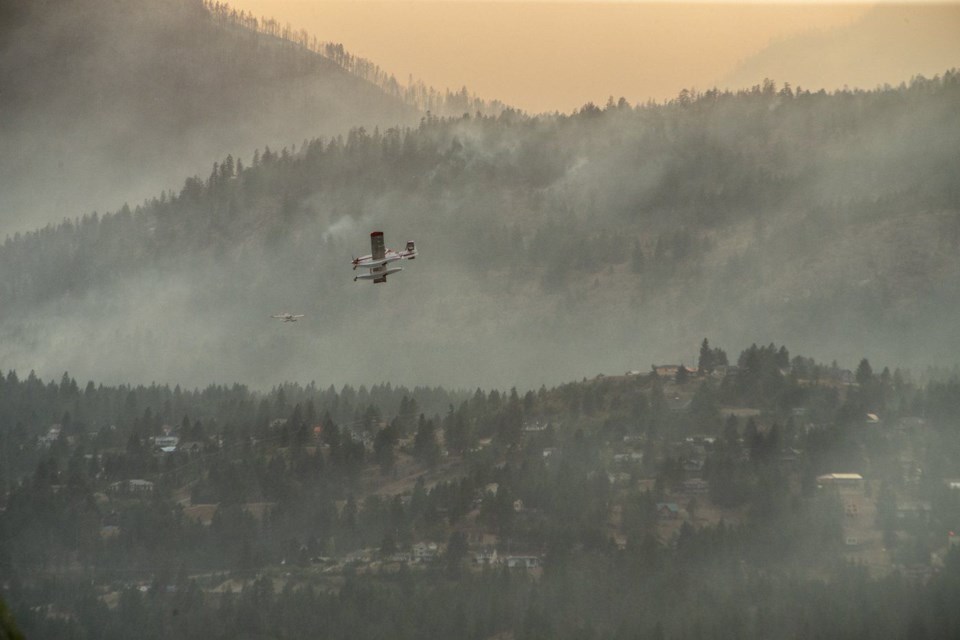OTTAWA — Ottawa announced a two-year pilot program Thursday to support Indigenous communities and organizations working on forestry management and emergency preparedness.
The funding, earmarked in Budget 2022, promises $28 million over five years to train 1,000 new community-based firefighters. The pilot involves nine Indigenous organizations and communities.
The program, which will train 125 new Indigenous fire stewards to be ready for potential fires, is welcomed by Cliff Buettner, director of forestry and protective services at the Prince Albert Grand Council in Saskatchewan. He said it is a welcome addition to the council’s existing training, which teaches 400 to 500 people a year as emergency firefighters to fight and mitigate ongoing fires to ensure they don’t tear through entire communities.
The training will bring both resilience to First Nations in the province and economic opportunities for those who have the training and are ready to be tapped for work, Buettner said.
For Buettner, the training is essential. Fires aren’t going anywhere, so having communities with training in emergency preparedness and fire mitigation will improve resilience when provincial resources are stretched thin during fire season.
Climate change, which creates hotter and drier conditions, is for worsening fires. Buettner has noticed a difference during his time as a firefighter: today, fire seasons start earlier and last longer, and the fires burn more intensely.
“In my 40 years of experience of fighting fire, things have changed,” Buettner said.
In Yukon, Nick Mauro, chief operating officer at Yukon First Nations Wildfire, received funds to train 130 wildland firefighters. He runs a two-week intensive training program that provides the certificates required to work on the fireline, like first aid, a national standardized fit test and a Type 2 wildland firefighting certificate, which contract firefighters need to work on the front lines of a wildfire.
Yukon First Nations Wildfire, created by nine Yukon First Nations development corporations, seeks to combine ancestral knowledge and western wildland firefighting programs. Its program is open to anybody but prioritizes Indigenous youth. The majority of the trainees are First Nations candidates.
The training program also introduces candidates to cultural burning — minor, controlled burns to remove flammable dead brush like grass. Cultural burns were long used on the landscape before Canada gained control of Crown land and suppressed the practice. They don’t just remove dead brush for the sake of preventing wildfires; cultural burns can also be used as a gardening tool to ripen conditions in the ecosystem for ancestral harvesting.
“To spread [cultural burning] education is one of the biggest pieces that we feel that we're in a position to do,” Mauro said.
Both Buettner and Mauro’s programs prepare candidates for not just wildfires but emergency preparedness and mitigation. Mauro teaches First Nation youth flood hazard awareness and search and rescue.
Canada can expect more climate disasters, including ice storms and atmospheric rivers, Mauro said. “It’s not just wildfire smoke that’s off the horizon,” he said.
The funding announcement for the pilot program comes on the heels of a scathing report from federal auditor general Karen Hogan. Last November, Hogan found Indigenous Services Canada spent on responding to and recovering from emergencies in First Nations than it did on prevention.
Natural Resources Canada is leading the pilot program and working with Indigenous Services Canada to help supply Indigenous communities with training and equipment through the Fighting and Managing Wildfires in a Changing Climate program. Ottawa has promised $256 million over five years to establish a wildlife equipment fund for provinces, territories and Indigenous communities.
It’s unclear how much funding each First Nation will receive directly from Indigenous Services Canada or if funds will be distributed to affected communities.




